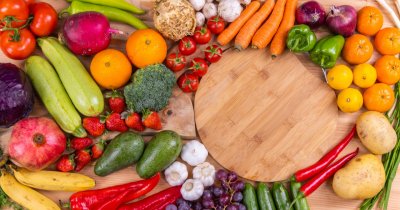Food diversity might be an issue for us in the future when it comes to the food reserve, as stated in this article. Also, political entities like the EU are pushing new policies, like the Green Deal, to make changes among various industries, such as agriculture, which will help us achieve our climate goals.
According to The Conversation, another change that could be done to ensure a cleaner food industry is the implementation of carbon labels that would indicate the level of greenhouse gas emissions per dish for restaurants and per product for supermarkets, for example.
In a new study, Ann-Katrin Betz, who is a psychologist, and her colleagues at the University of Würzburg in Germany, tested how such labels would influence the purchase decisions for people when they are eating out.
The 265 participants were asked to select their favorite dish from each of nine hypothetical menus. The products within the menus were either low, medium or high in carbon emissions, and some of the participants had a default option for a specific dish, regardless of the emissions that the specific dish involved.
The participants were given random menus, with or without the carbon emission labels that showed the amount of emissions resulted from the production of that specific dish.
Whenever participants were given the low-emissions option as the default, the share of high-emission choices decreased significantly, lowering the emissions per dish by 31.7%.
Also, when people were given menus with carbon labels, the emissions from the chosen dishes were 13.5% lower when compared to when no label was being used.
When the menu was showing the high-emission option as the default without the label, 59% of the participants chose that option, while 12% chose the low emission option.
Finally, whenever carbon emission labels were shown across all products, the share of people who went for the high emission dish fell to 36%, as opposed to people who chose the low-emission dish, who had a share of 30%.
52% of the people chose the default option when it was accompanied by the green label.
This study shows that, if people would be given a choice regarding the eco-friendliness of their dish, quite a few of them would go for the dish associated with the lower emissions.
Additionally, it is important to note that this study was done online and it is hypothetical, meaning that consumer behavior is subject to change when visiting their favorite restaurant.
A few ways restaurants and retailers can make plant-based options more attractive is through a series of strategies, the first of which being the implementation of more plant-based, environmentally friendly options in the menus.
At the same time, retailers can make plant-based options more visible by placing them alongside regular products, so that people can more easily see their choices.
Other research concluded that the naming of products can also influence people's choices, and instead of calling their product vegan or vegetarian, companies can opt for more catchy names that could potentially boost sales.
 Mihai - Cristian Ioniță
Mihai - Cristian Ioniță












Any thoughts?